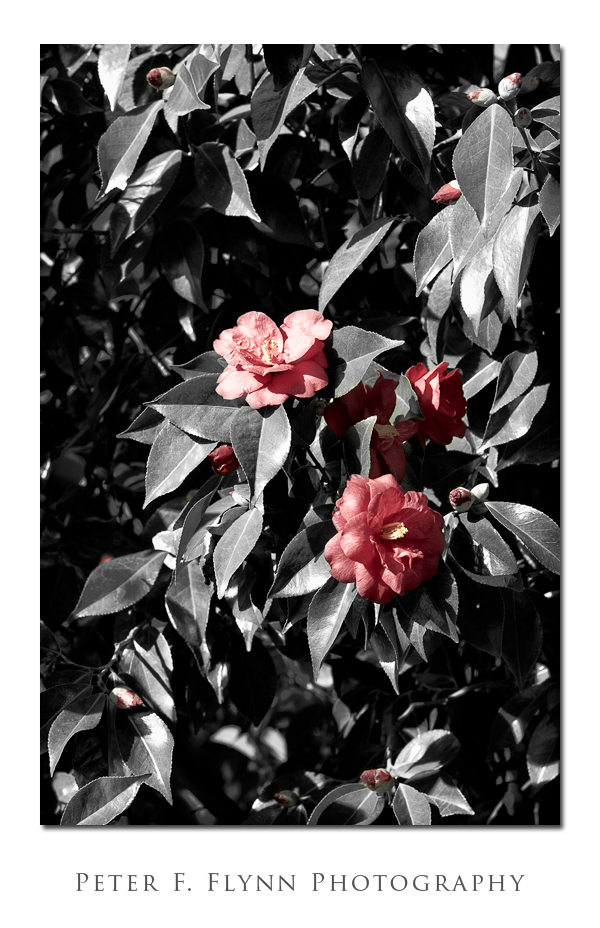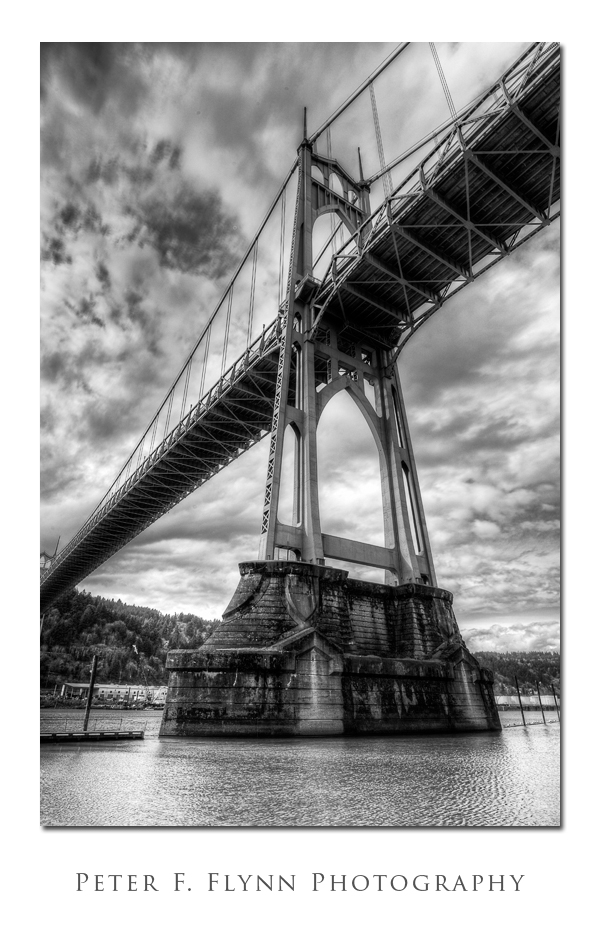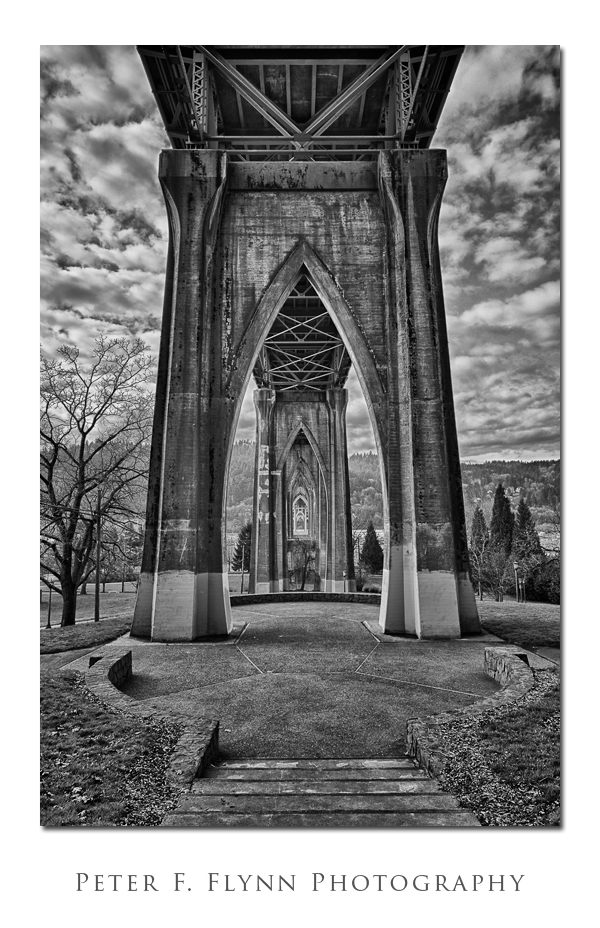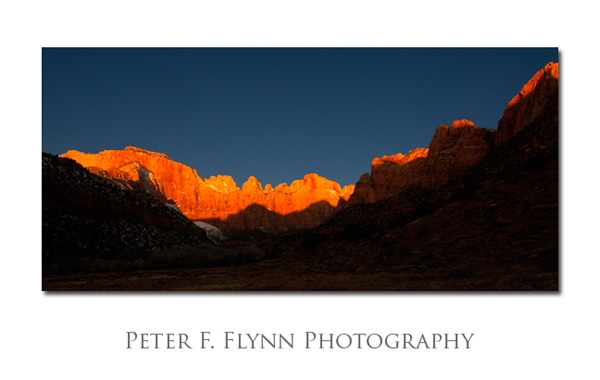The northern gateway of Portland, OR is marked by a most beautiful structure named the St. Johns Bridge. The steel suspension bridge spans the Willamette River between the Portlandian neighborhood of St. Johns on the east side and the industrial district the dominates the waterfront area near the Linnton neighborhood on the west side. The bridge, completed in 1931, was designed according to a Gothic Cathedral-like theme, with a pair of large spire-topped towers, distinctively arched supports, and a high, long arching center span (1,200 ft).
Cathedral Park is located under the east end of the Bridge, and provides excellent views of the bridge supports all the way to the eastern main tower. Not a large park, but a unique one.
Shooting the arches and the underside of the bridge presents all sort of challenges, chief among them being the high dynamic range scene generated by the (always) strongly backlit subject. As the rival smartphone vendors seem to claim constantly these days…we have an app for that… Actually, we have two new apps for this, which are HDR Efex Pro by Nik Software and the new version of Photomatix Pro (4.0), by HDRsoft. I’ll have a few comments on these software packages in the next few entries.
 Images in this entry were recorded using the Nikon D3s, and the AF-S NIKKOR 16-35mm f/4G ED VR, the AF-S NIKKOR 24-70mm f/2.8G ED, and the AF-S NIKKOR 70-200mm f/2.8G ED VR II lens. Bracketing for the HDR images of the bridge pillar and the support arches consisted of 5 shots at +2 EV, +1EV, 0 EV, -1 EV, and -2 EV. These two HDR images were converted to BW using Nik Silver Efex Pro 2. The image of the Camellia Bush is not HDR, but is a single color image, converted to BW using Nik Silver Efex Pro, masked to let some of the color of the flowers show through.
Images in this entry were recorded using the Nikon D3s, and the AF-S NIKKOR 16-35mm f/4G ED VR, the AF-S NIKKOR 24-70mm f/2.8G ED, and the AF-S NIKKOR 70-200mm f/2.8G ED VR II lens. Bracketing for the HDR images of the bridge pillar and the support arches consisted of 5 shots at +2 EV, +1EV, 0 EV, -1 EV, and -2 EV. These two HDR images were converted to BW using Nik Silver Efex Pro 2. The image of the Camellia Bush is not HDR, but is a single color image, converted to BW using Nik Silver Efex Pro, masked to let some of the color of the flowers show through.
Copyright 2011 Peter F. Flynn. No usage permitted without prior written consent. All rights reserved.


 The Towers of the Virgin at dawn are arguably the most excellent scene in
The Towers of the Virgin at dawn are arguably the most excellent scene in